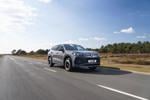Fleet managers need to carry out a cost-gain analysis before deciding whether cold weather tyres are a viable option, weighing up the additional costs involved against the savings to be made in reduced accident costs, says Mycompanyfleet.
There has been a lot of debate and interest recently about the need for cold weather tyres in the UK, with suppliers reporting strong demand in some areas but lighter demand elsewhere. With the current cold snap now adversely affecting many parts of the country, the discussion about the need for winter tyres seems set to intensify.
The Society of Motor Manufacturers and Traders, the trade association for the vehicle manufacturers, for example, is recommending the use of cold weather tyres in the wake of a Government report which says that industry needs to be better prepared for the winter months.
Cold weather tyres are most effective when the temperature falls below 7 degrees Centigrade, and, when braking on an icy road at 20mph, they stop a car 11metres sooner than one with summer tyres. In wet conditions, they stop a car 4.8m sooner from 60mph.
However, many fleet managers may be reluctant to suggest to their drivers that they switch to the special tyres because of the additional costs involved in having two sets of tyres.
One way to assess the need and the cost is to use fleet software to model a typical situation and calculate what the additional costs are compared to the savings that can be made in terms of reduced accident costs and, possibly, lower fuel bills through reduced skidding.
Luke Hicks, business executive at Mycompanyfleet, the automotive arm of HR software provider, NorthgateArinso, said there was a detailed cost-gain analysis to be applied before meaningful decisions could be taken by fleet managers.
“It isn’t a cut and dried decision and the current spell of bad weather seems certain to generate greater interest in winter tyres, especially in those areas worst affected,” he said.
“Fleet managers have to balance the additional tyre costs against the likelihood of increased accident rates without the tyres, which have been proved to be more effective in braking and steering in both cold and wet weather conditions.
“The best way to do that is through modeling the situation using fleet software to identify the true costs and true savings that can be achieved. But if switching to cold weather tyres saves one accident from occurring, then the tyres more than likely pay for themselves,” he said.
Cold weather tyres come into their own when temperatures fall below 7 degrees Centigrade as they contain more natural rubber and advanced silica compounds which improve grip and reduce tyre hardening.
“Seven degrees centigrade is a fairly typical winter temperature that most of us encounter out on the roads every day and currently we are seeing much lower temperatures than that. With such a cold start to the winter, cold weather tyres may well have a real role to play this winter for many fleets,” he added.













Login to comment
Comments
No comments have been made yet.